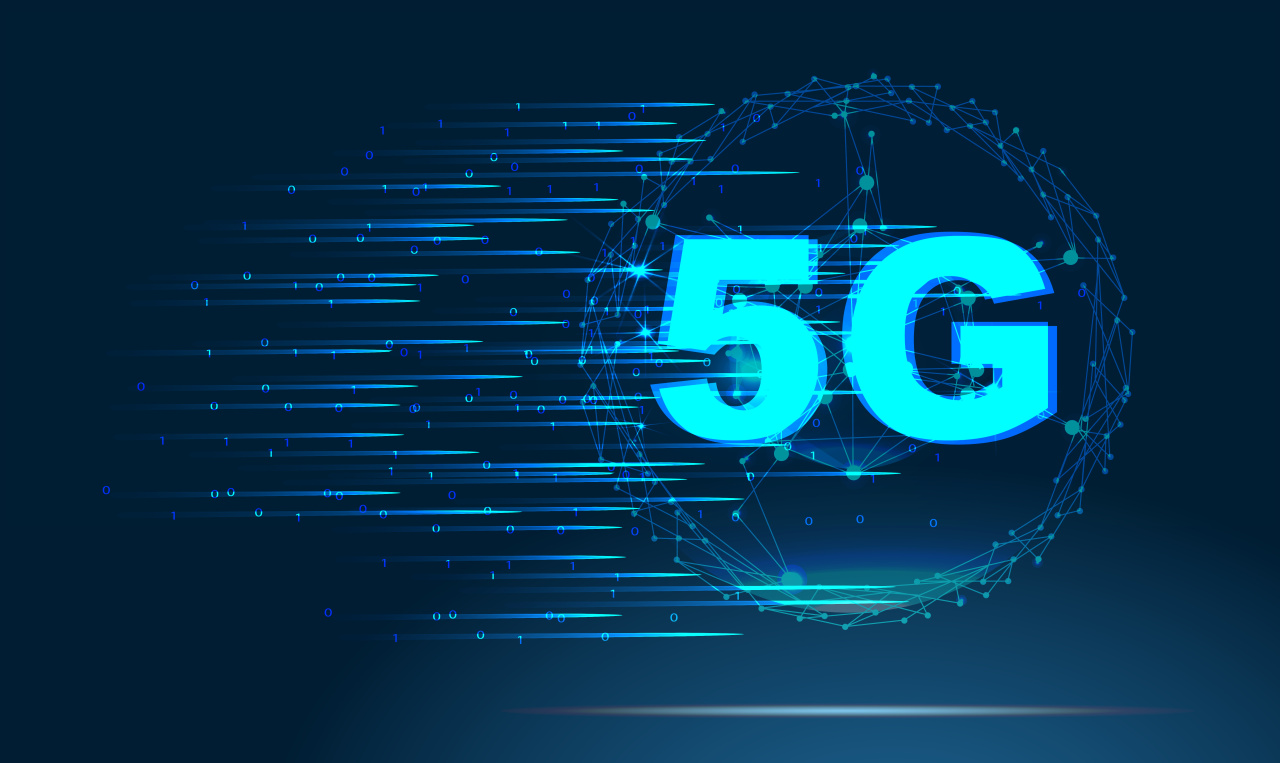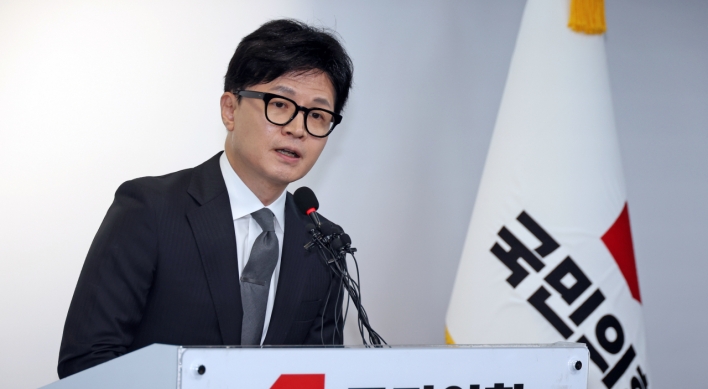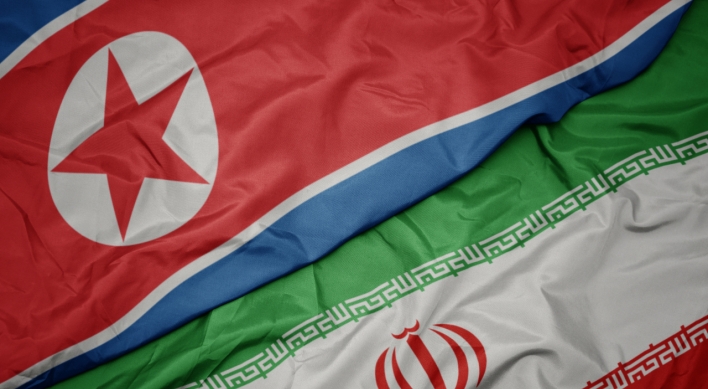[News Focus] Is ‘real 5G’ elusive goal for Korea?
With 20% switched over to the fastest available mobile networks, consumer complaints grow over ‘disappointing’ speed
By Song Su-hyunPublished : May 30, 2021 - 16:30

Is 5G, the next-generation of wireless technology, worth the hype?
This is a question frequently thrown out by multiple groups of 5G users here since the fifth generation mobile networks went into commercial service at 11:00 p.m. on April 3, 2019 in South Korea, in a loudly-trumpeted world first.
Over the past two years, the number of 5G users in Korea has steadily grown to account for about 20 percent, or 14.48 million, of total mobile subscriptions in the country as of end March, government data shows.
Along with that, consumer complaints over slower-than-expected 5G services have also grown, with some even taking legal action against domestic telecom companies.
Korea has a relatively high percentage of 5G subscribers among 26 countries that have launched 5G services, according to a recent report by Ericsson-LG, a supplier of 5G network equipment. However, their satisfaction rate stood at 27 percent, comparatively lower than other countries.
“This lower level of satisfaction could be attributed to exaggerated claims of 5G performance made during the promotion period, unsatisfactory 5G indoor coverage, a lack of more diverse and affordable price plans limiting consumer choices, and an already superior 4G and home Wi-Fi experience as a benchmark,” the report said.
The most recent measurement on the quality of Korean 5G telecommunications was 429 megabits per second in average download speed as of March this year, according to a survey by market researcher Speed Check.
That compares with 690.47 Mbps -- the average download speed that the Ministry of Science and ICT said the three Korea mobile carriers SK Telecom, KT and LG U+ were offering to their consumers in December. The ministry oversees government policies on 5G investment and service quality.
According to ministry’s data, SKT offered the fastest rate of 795.57 Mbps, which was raised by 6.60 Mbps from the end of June last year. The record speed for KT and LG U+ was 667.48 Mbps and 608.49 Mbps each.
Whichever is correct, it falls short of being 20 times faster than the previous 4G Long Term Evolution network, as initially promoted by the telcos. According to the ICT Ministry’s assessment in 2019, the average download speed on the 4G network was 158 Mbps.
The Ericsson report, however, said this doesn’t mean that the South Korean 5G deployment is subpar.
“To understand the extremely high expectations and benchmarks of South Korean consumers we need to look back at satisfaction levels measured by Ericsson Consumer Lab in 2012-13, when 4G was launched in South Korea,” the report said.
It went on, saying “The share of consumers satisfied with 4G back then is similar to the level we see now with 5G, suggesting that when compared to consumers in other markets, South Korean consumers expect much more from their service providers -- superior performance, no gaps in coverage and new innovative services, especially when they are asked to pay a premium for a 5G subscription plan.”
20x speed only in theory?
Neither the three telcos nor the Korean government came up with the “20 times faster” descriptor for 5G. It actually was the official definition from the International Telecommunication Union.
The global body described 5G as having the fastest download speed of 20 gigabits per second and the fastest upload speed of 10 Gbps. That means high-definition movies can be downloaded with seconds.
However, experts point out that the dream speed can come true only in an ideal environment of harmonized high-frequency spectrums and wide-enough coverage.
“While the Korean government was obsessed with snatching up the world’s first title for 5G, the mobile carriers were frantic about promoting 5G services using the theoretical maximum speed set by the ITU at the time,” said an industry watcher. “(To really offer that speed,) the telcos would need 10 times more frequency bands to reach the promised speed and additional transmission technologies that now.”
The Korean telcos were allocated with 3.5-Gigahertz and 28-GHz frequency bands in 2018 for development of a nationwide 5G network infrastructure.
SKT and KT secured 100 megahertz blocks of the 3.5 GHz band, while LG U+ got 80 MHz of the same band. The three firms were equally allotted with 800 MHz of the 28 GHz band.
Theoretically, 5G telecom services are deemed possible to be developed using the frequency bands of mid-band spectrums from 1 to 6 GHz, and the millimeter wave spectrums of 26, 28 and 40 GHz.
The wider the bandwidth of a frequency band is, the higher the data transmission speed possible.
However, the three Korean telcos had put the cost-to-quality ratio first in their initial investment and development in 5G.
“To deliver 5G outdoor services, telecom companies need to install five times more base stations for the 28 GHz band than the 3.5 GHz,” explained an official at a domestic carrier. “To bring 5G services to the market in a given period time with the government’s goal of being the first 5G country, commercializing the 3.5 GHz band first was reasonable in terms of costs and service coverage.”
The 3.5 GHz band is also deemed as playing a key role in making 5G go mainstream globally, considering its wider coverage than the 28 GHz band, according to GSMA, a global organization representing the interests of the telecom industry.
“The speed, reach and quality of 5G services will depend on the support of governments and regulators for timely access to the right amount and type of spectrum, and under the right conditions,” said GSMA. “This spectrum access will be a critical component in bringing 5G technologies to market.”
However, the organization says, “For 5G to reach its full potential, mobile operators are dependent on getting more widely harmonized spectrum across three frequency ranges sub-1 GHz, 1-6 GHz, and above 6 GHz.”
Government nearly scraps 28 GHz plan
New ICT Minister Lim Hye-sook, during her parliamentary confirmation hearing earlier this month, said business models for 28 GHz 5G services remain uncertain.
Korea’s telecom technologies and the levels of supporting equipment aren’t mature enough, she said on May 10.
The remarks were taken as then minister-nominee’s public acknowledgement that the government would give up on the establishment of a nationwide 5G network on the 28 GHz band.
The three mobile operators had the obligation of building at least 15,000 5G base stations for the 28 GHz band in return for receiving the frequency band and executing a total of 20 trillion won in investments.
But the government’s tone started to change last year, as technological limits are being proved overseas. For example, US mobile carrier Verizon is in the process of shifting from 28 GHz services to mid-band spectrums.
Rather than pushing for a nationwide 28 GHz 5G network, the government and industry have agreed on developing and offering 28 GHZ services for businesses only.
However, considering that the limits of 28 GHz technologies are widely known, enterprises are not willing to introduce 5G services for facility operations.
Each telecom company have showcased limited success in uses of 28 GHz 5G in the fields of smart manufacturing, construction, logistics, media, mobility and medicine.
“The three carriers plan to establish joint base stations for large-scale smart factories in optimal areas in industrial complexes and provide special 5G networks using 28 GHz for companies that need 5G-specific manufacturing processes or content development,” said an official from a local carrier.
KT’s demonstration of 28 GHz 5G services at the PyeongChang Winter Olympics in 2018 is a good example of tapping into 28 GHz. The company had set 28 GHz base stations for the region and operated special network control systems. KT livestreamed the bobsleigh races through Sync View and speed skating races through the 360-degree Time Slice.
Currently as many as 20 companies including Samsung Electronics and Naver have shown interests in building the special 5G networks, according to the telecom industry.
As for individual consumers, the telcos are continuing to discover areas that would effectively provide 28 GHz 5G services especially for virtual reality and augmented reality content. The companies have chosen the southern part of Seoul as a special zone for mixed reality content services and are preparing to launch 28 GHz 5G.
Efforts to improve 3.5 GHz
To soothe public anger over the current 5G network quality and complaints about expensive bills, the telecom industry is making continuous efforts to improve the quality of 3.5 GHz 5G.
The three telcos are working to expand 5G coverage nationwide by adding more base stations.
Compared to April of 2019 when 5G was first launched, KT runs five times more 5G base stations, which stands at a total of 117,618 stations across the country as of May 25.
This year, KT aims to further expand its terrestrial 5G coverage by bringing 5G inside buildings.
The mobile carriers also adopt new technologies to support the current 3.5 GHz and low-latency 5G services.
SKT, which has built 134,000 5G base stations as of May 25, is actively applying mobile edge computing, known as MEC, to AR/VR services, cloud gaming, autonomous driving control system and smart factory services.
MEC refers to a network technology that processes data nearby users, at close base stations and switching centers, without transmitting data all the way to the backbone network or data centers. It has the advantage of reducing traffic load of the backbone network and drastically reducing the delay time of a specific service.
LG U+ is also utilizing the MEC technology to build a smart port system in Busan.
By applying MEC to the current 3.5GHz 5G network, LG has developed a remote control system for three to four cranes at once from an office room.
The carriers are also striving to maintain the network quality by introducing automatic management systems.
SKT has introduced an artificial intelligence-based network management system dubbed ”Tango,” which is designed to predict patterns of data traffic growth and prevent slowdowns in public places like subway stations and bullet trains.
By Song Su-hyun (song@heraldcorp.com)



![[Exclusive] Korean military set to ban iPhones over 'security' concerns](http://res.heraldm.com/phpwas/restmb_idxmake.php?idx=644&simg=/content/image/2024/04/23/20240423050599_0.jpg&u=20240423183955)

![[Graphic News] 77% of young Koreans still financially dependent](http://res.heraldm.com/phpwas/restmb_idxmake.php?idx=644&simg=/content/image/2024/04/22/20240422050762_0.gif&u=)



![[Pressure points] Leggings in public: Fashion statement or social faux pas?](http://res.heraldm.com/phpwas/restmb_idxmake.php?idx=644&simg=/content/image/2024/04/23/20240423050669_0.jpg&u=)









